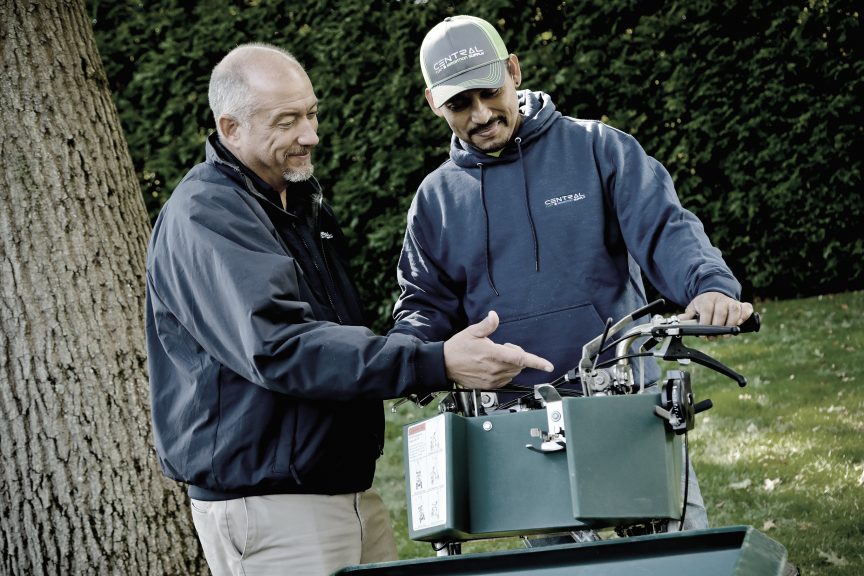It’s been a challenging and busy year, and now that winter is here you’re ready to store your equipment away for the upcoming seasons. Before you do so, it’s important to remember to winterize your equipment. Although maintenance may be the last thing you had in mind, it will save you time and money in the long run.
Taking the extra time to check and winterize your equipment will ensure your business is prepared and ready to go for the upcoming seasons. Putting off winterization can lead to bumps down the road such as an unexpected breakdown. You want to be sure your business prevents any obstacles with your equipment for the coming year.
But, what does winterizing your equipment consist of? For items that will be put away for a few months, the task typically includes a thorough cleaning, inspecting and replacing parts, making sure all systems are functioning properly, lubricating, draining or stabilizing fuel and proper storage. We’ve connected with Bob Hartman, Central’s Director of Turf, to share checklists on why, and how to properly winterize your equipment.
Why You Should Winterize Your Equipment:
- Extend the lifespan of your lawn equipment.
- Avoid professional, costly repairs at the start of the next season.
- Taking a few simple steps before storing your gas-powered equipment for the winter will safeguard a smoother start to your spring season.
- Remember, when it comes to winterizing lawn equipment, it is always best to refer to your owner’s manual for instructions designed specifically for your equipment.
- To stay protected & covered by your warranty
- Your outdoor power equipment will last for many years with some basic maintenance and care. As you get your equipment ready for storage, now is a good time to take a few extra preventive maintenance steps.
Key Steps: Stabilizing/Draining Fuel
- Gasoline that is left in fuel tanks over the long winter can breakdown, leaving gum deposits and varnish build-up that can plug up the entire fuel system. It is best to either drain the fuel system or use a fuel stabilizer. We recommend using a stabilizer in your mowers and 4 cycle engines and draining the fuel from equipment with two-cycle engines such as string trimmers, blowers, hedge trimmers, and chain saws.
- Adding a fuel stabilizer to a full tank of fuel and running the engine in a couple of minutes ensures the stabilizer is in the entire fuel system. A full tank of fuel prevents water condensation from contamination; so it is best to fill up the tank after running the engine.
Additional Steps:
- This is also a good time to sharpen the blade(s) on your mowers.
- Cleaning the underside of your mower deck will pay dividends. The encrusted grass clippings trap moisture and may cause rust. Scraping with a putty knife or brush works well, then rinse with water. If you want to go that extra mile, you can even spray the underside of the deck with a silicone based spray to repel water or condensation during storage.
- It’s also a good time to change the oil. Old oil contains moisture and contaminants that may pit bearings and other sensitive engine parts. It is also a good practice to make note of the date and/or operating hour range to remind you of your next oil change interval.
- Remove the spark plug and pour a small amount of oil into the cylinder. This is also a good time to replace it with a new spark plug. Remember to properly gap the plug per manufacturers’ recommendations before installation. Do not over tighten during re-installation.
- Inspect and clean the air filter. Foam filters can be cleaned with soap and water. Replace damaged, dirty, or old air filters.
- Rubber fuel lines can rot, crack, and eventually disintegrate over time with today’s modern fuel; which contains more ethanol than years ago. Check all fuel lines and replace the fuel filter.
- Inspect for worn or missing parts and hardware. This is your chance to tighten loose screws and bolts. Remember to also lube bearings, cables, and moving parts.
- Periodically check on stored equipment to make sure no critters have chewed through wires or have nested in your equipment.
- If you own lawn equipment that requires a battery, now would be a good time to remove it and bring it indoors for the winter. Clean the battery well, removing any dust, grease, or dirt. Store it in a cool, dry location. It is best not to store a battery directly on the ground as that can cause it to lose its charge. Place the battery on a trickle charger or come next spring, use a battery charger to bring the battery to full capacity, then reinstall it into your equipment.
Finally
Rely on Central to help, whether its questions about winterization of equipment and other systems, troubleshooting, or recommendations on the newest technologies. We stay at the leading edge of the industry and we’re ready to help you grow!

